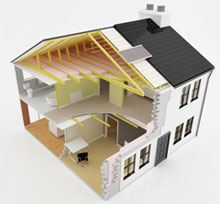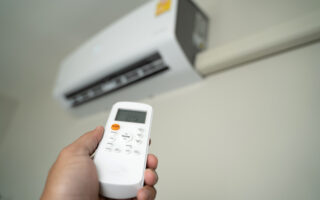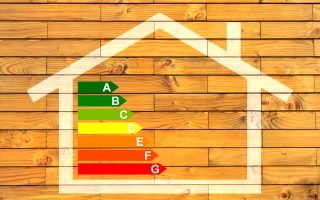Why Insulate Your Home in France?


When buying a property, the mantra is “Location, Location, Location”… perhaps, with ever increasing fuel costs and spiralling carbon emissions, we should change it to “Insulation, Insulation, Insulation”. It is acknowledged that effective insulation is the cheapest and most efficient way for any household to reduce energy consumption. There are many new and innovative “green” products on the market place that can provide our hot water and space heating requirements, but if all that sustainable energy is leaking through our walls and roof spaces, it seems such a waste.
A considerable amount of greenhouse gas emissions come from heating our homes and the water we use in them. Some home truths: 57% of this energy is for space heating, 25% for heating water, 15% for appliances and lights and 3% for cooking.
Roof
As much as 1/3 of the heat you pay for could be escaping through your roof. Effective insulation of loft space can cut 20% off energy bills and is hugely cost effective, paying for itself in 2-3 years. A minimum depth of 220mm of cellulose (recycled newspapers) between the joists is recommended, and the effective insulation of any hot water tank or boiler is a must wherever it is sited.
Windows & Doors
Windows lose on average 18% of a home’s heat energy. Double glazing, or even triple glazing, in rooms where the heating demand is high, can dramatically reduce this heat loss and considerably lower energy bills.
Uncontrolled leakage of air through gaps in dwellings results in unnecessary heat loss (can be up to 15%) and discomfort from draughts. Many older buildings have poorly fitted windows and doors. Draughts cause cold damp air to be forced in as warm air is drawn out. A lower room temperature is comfortable in a draught free atmosphere, saving even more on energy bills.
Many types of draught proofing are available, such as brushes, foams and sealants, or shaped rubber and plastic fittings.
Walls
Walls can lose around 33% of all heat from detached houses, and if you live in a house with solid walls, this can be as much as 45%.
Insulating cavity walls is inexpensive and considerably reduces heat loss, leading to much lower energy bills.
Solid walls, as found in a great many of the older properties in France, can pose different problems. Wall insulation can be an expensive exercise but the energy savings can be dramatic.
External insulation involves adding a weatherproof insulating treatment to the outside of the walls, which in some cases can considerably improve the appearance of the property.
Internal insulation involves insulating plasterboard with a thickness of around 90mm.
Retrofitting older properties for energy efficiency and proper insulation can dramatically cut energy bills. It also greatly reduces our personal CO2 emissions that cumulatively threaten the very existence of our planet.
New Builds or Extensions
The opportunities for the highest standards of insulation, and thus huge energy saving, now exist for all new builds or extensions to existing properties.
The SIP, or Structural Insulated Panel, developed and produced by Kingspan, Europe’s leading manufacturer of insulation products, is the basic construction unit for buildings that have dramatically reduced energy requirements. Its building system is a highly efficient, airtight construction which both meets and exceeds many of the modern demands of the construction industry today. The system allows for ample scope for individual design and any heating systems that are being considered can be significantly downgraded. These energy savings, up to 90% of that of a standard build, will go on and on for the life of the property.
Reports published by such organisations as Ofgem in the UK indicate that energy bills could rise by as much as 60% by 2016. By reducing our energy requirements we can do a great deal to guard ourselves against these ever increasing demands on our resources. So…before it is too late, INSULATE!
Tom Wood, agent for Kingspan TEK building systems, email: thomas.wood@wanadoo.fr
Share to: Facebook Twitter LinkedIn Email
More in cooking, heating, renovation
By FrenchEntrée
Leave a reply
Your email address will not be published. Required fields are marked *



